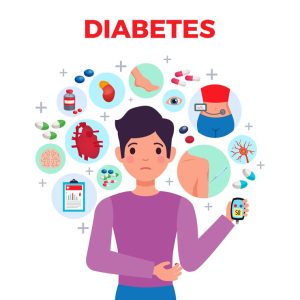Sedentary lifestyles contribute to weakened cardiovascular health. Lack of regular exercise hinders blood circulation, impairs blood vessel function, and increases the likelihood of obesity and other risk factors for heart disease. Regular physical activity is crucial for maintaining a healthy cardiovascular system, and its absence can have long-term detrimental effects.
In an era dominated by technological advancements that encourage a sedentary lifestyle, the impact of physical inactivity on cardiovascular health has become a critical concern. The human body, intricately designed for movement and activity, undergoes a cascade of detrimental changes when deprived of regular exercise, posing a significant threat to the cardiovascular system.

One of the immediate consequences of physical inactivity is the compromised efficiency of the heart. The heart, a muscle that pumps blood throughout the body, adapts to the demands placed upon it. When physical activity is limited, the heart pumps less blood with each beat, leading to a decrease in stroke volume. As a result, the heart rate increases to compensate for the reduced volume, placing additional strain on this vital organ.
Regular exercise plays a pivotal role in maintaining optimal blood pressure levels. Physical inactivity disrupts this delicate balance, contributing to the development of hypertension—a major risk factor for cardiovascular diseases. Elevated blood pressure forces the heart to work harder, leading to hypertrophy, or thickening of the heart muscle. Over time, this hypertrophy becomes maladaptive, impairing the heart’s ability to function efficiently and increasing the risk of heart failure.
The correlation between physical inactivity and obesity further compounds the strain on the heart. Sedentary lifestyles often contribute to weight gain and the accumulation of visceral fat, which surrounds internal organs. This adipose tissue produces inflammatory substances that not only contribute to insulin resistance but also directly impact the cardiovascular system. Chronic inflammation is a driving force behind atherosclerosis, the gradual buildup of plaques within arteries that restrict blood flow and elevate the risk of heart attacks and strokes.
Physical inactivity also disrupts the delicate balance of lipids in the bloodstream. Regular exercise promotes the circulation of high-density lipoprotein (HDL) cholesterol, the “good” cholesterol that helps remove excess cholesterol from the arteries. In the absence of physical activity, levels of low-density lipoprotein (LDL) cholesterol, the “bad” cholesterol that contributes to plaque formation, may rise, further escalating cardiovascular risks.
The sedentary lifestyle prevalent in modern society not only impacts the heart directly but also contributes to a cluster of conditions collectively known as metabolic syndrome. This syndrome, characterized by a combination of abdominal obesity, high blood pressure, insulin resistance, and abnormal lipid profiles, significantly elevates the risk of developing cardiovascular diseases.
Mitigating the cardiovascular decline associated with physical inactivity requires a concerted effort to incorporate regular exercise into daily life. Aerobic activities such as brisk walking, jogging, swimming, or cycling have been shown to enhance cardiovascular health. Resistance training, focusing on building muscle strength, complements aerobic exercise in promoting overall heart health.

Public health initiatives and individual awareness campaigns play a crucial role in encouraging physical activity. Creating environments that facilitate active living, from accessible green spaces to workplace wellness programs, fosters a culture of movement. Understanding the link between physical inactivity and cardiovascular decline empowers individuals to make informed choices that prioritize heart health.
In conclusion, the sedentary threat posed by physical inactivity to cardiovascular health is a pressing issue in today’s society. Recognizing the profound impact of a lack of exercise on the heart and overall well-being underscores the importance of adopting active lifestyles. By embracing regular physical activity, individuals can break free from the sedentary trap, promoting cardiovascular resilience and reducing the risk of heart-related complications.


